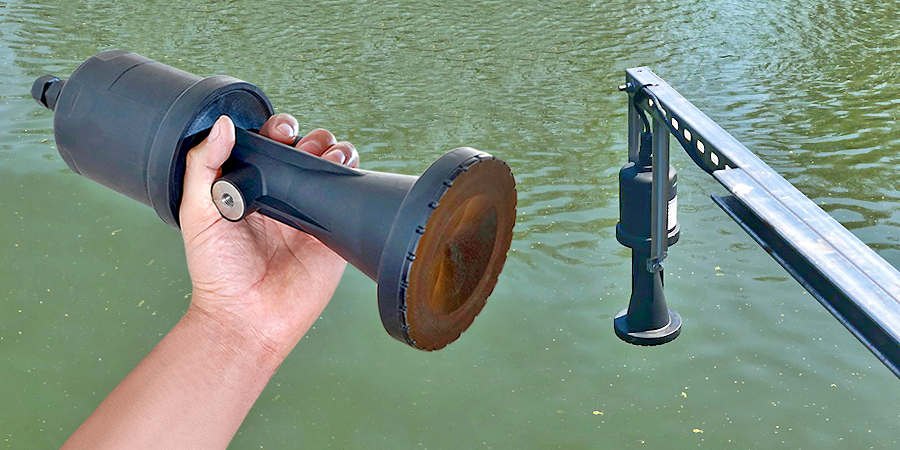
Comparative Analysis Of Acoustic Tomography With Other Water Measurement Techniques
Introduction:
Water Is A Critical Resource, And Accurately Measuring And Monitoring Its Movement In The Subsurface Is Vital For Various Fields Such As Hydrogeology, Environmental Management, And Resource Planning. Several Techniques Have Been Developed To Measure Subsurface Water Flow, And One Promising Method Is Acoustic Tomography. In This Blog, We Will Compare Acoustic Tomography With Other Water Measurement Techniques To Understand Its Advantages And Limitations.
Acoustic Tomography:
Acoustic Tomography Is A Non-Invasive Technique That Utilizes Sound Waves To Monitor And Map Subsurface Water Flow. It Involves Transmitting Sound Signals Through The Ground And Measuring Their Travel Time And Velocity To Infer Water Movement. Acoustic Tomography Offers Several Advantages:
– High-Resolution Mapping: Acoustic Tomography Provides Detailed Images Of Subsurface Water Flow, Allowing For Precise Mapping Of Water Movement Patterns.
– Non-Destructive: Unlike Invasive Techniques Such As Drilling Or Excavation, Acoustic Tomography Does Not Require Physical Disturbances To The Ground, Making It Environmentally Friendly.
– Real-Time Monitoring: Acoustic Tomography Enables Continuous Monitoring Of Water Flow, Providing Real-Time Data For Effective Decision-Making.
– Large-Scale Coverage: Acoustic Tomography Can Cover Large Areas, Making It Ideal For Monitoring Water Flow In Expansive Regions Such As Watersheds Or Aquifer Systems.
– Versatility: Acoustic Tomography Can Be Applied To Various Types Of Subsurface Environments, Including Soils, Sediments, And Porous Media. It Can Be Used In Diverse Settings, From Agricultural Fields To Urban Infrastructure.
– Integration With Other Techniques: Acoustic Tomography Can Be Combined With Other Geophysical Methods, Such As Electrical Resistivity Tomography Or Ground-Penetrating Radar, To Gain A More Comprehensive Understanding Of Subsurface Water Flow.
– Early Detection Of Anomalies: By Continuously Monitoring Subsurface Water Flow, Acoustic Tomography Can Detect Changes Or Anomalies In Water Movement Patterns. This Early Detection Can Help Identify Potential Issues Such As Groundwater Contamination Or Unstable Geological Conditions.
Future Directions For Acoustic Tomography Include Advancements In Sensor Technology, Data Acquisition Systems, And Data Processing Algorithms. Additionally, Incorporating Machine Learning And Artificial Intelligence Techniques Can Enhance The Efficiency And Accuracy Of Subsurface Water Flow Mapping. Developing User-Friendly Interfaces And Visualization Tools Will Facilitate The Interpretation And Utilization Of Acoustic Tomography Data By A Broader Range Of Stakeholders.
Here Is One Of The Methods Of Acoustic Tomography That Has Advantages Over Other Methods:
Acouinfo
Measuring Rivers’ Velocity And Flow Rate Is One Of The Most Critical Issues In Water Resources Management. For The Past Two Decades, Scientists Have Been Using Sound Waves To Estimate Current Speed. Advanced Devices Such As ADCP, AVMs, And H-ADCPs Continuously Measure River Flow. The Most Significant Disadvantage Of Using These Devices Is That They Measure The Velocity Of A Limited Number Of Points Of A River Cross-Section, And These Points Are Insufficient To Accurately Estimate The Average Speed Of The Entire Cross-Section.
Data Measurement By Acoustic Thermography: Method Of River Model
To Accurately Measure The Key Parameters Of The Aquatic Environment Such As Flow Rate, Speed, Temperature, E, And Salinity Of Water, A Device Is Needed That Can Record And Measure All These Parameters With Confidence, High Accuracy, Quickly, Quickly And Easily. Using This System, It Is Possible To Provide Information On The Desired Aquatic Environment At Any Time, Even Remotely To Experts In Various Fields Such As Water Management, Agriculture, Meteorology, Floods, Fisheries, Biology, And .. To Be Used.
AcouInfo Has Advantages Over Other Types:
AcouInfo Has Two Transmitters And Receivers That Are Used On Both Sides Of The River By Emitting Sound Waves Throughout The River And Recording Information In The Processor Of The Device, These Parameters Are Measured By Acoustic Tomography Methods Of Water.
- Measurement Of Water Parameters In The Whole Section Of The River
- No Need For Equipment Such As Boats, Cable Cars And Special Infrastructure
- Suitable For All Types Of Shallow And Deep Rivers
- Suitable For Monitoring Very Severe Flood Currents
- No Need For Specialized Manpower To Take Data And Set Up The Device
- No Human Intervention During Data Collection And Maintaining User Safety
- Fixed Location Of Device Equipment During Data Collection Convenient And Fast Setup In Portable Mode
Innovative Point Of Our Product:
- Ability To Display Instant Results
- Lightweight And High Operating Speed
- Data Storage For A Long Time
- Transfer Recorded Data To The Computer Via Bluetooth And Wi-Fi
- Ability To Receive And View Information Online Via The Internet
- Can Be Used In Any Weather Conditions
- Can Be Used In Shallow Rivers With A Minimum Depth Of 25 Cm
- Calculate Water Flow Velocity In The Range Of M 20 M / S With An Accuracy Of 0.1 Cm / S
- Calculate The Instantaneous Water Temperature With An Accuracy Of 0.03 ° C
Overall, Acoustic Tomography Offers A Powerful And Non-Invasive Approach To Monitor And Map Subsurface Water Flow. By Harnessing The Properties Of Sound Waves, This Technique Provides High-Resolution, Real-Time Data That Can Aid In Groundwater Management, Hydrological Studies, Environmental Assessments, And Geotechnical Engineering. While Challenges Exist, Ongoing Research And Technological Advancements Are Expected To Further Improve The Accuracy And Usability Of Acoustic Tomography For Subsurface Water Flow Monitoring. With Its Ability To Unveil The Hidden Pathways Beneath The Earth’s Surface, Acoustic Tomography Has The Potential To Revolutionize Our Understanding And Management Of Subsurface Water Resources.
Groundwater Monitoring Wells:
Groundwater Monitoring Wells Have Long Been Used To Measure Water Levels And Quality In The Subsurface. These Wells Consist Of A Pipe Inserted Into The Ground, Allowing Direct Access To The Water Table. While Groundwater Monitoring Wells Have Been The Traditional Choice For Water Measurement, They Have Certain Limitations:
– Limited Spatial Coverage: Monitoring Wells Provide Point Measurements At Specific Locations, Making It Challenging To Obtain A Comprehensive Understanding Of Water Movement Across A Larger Area.
– Expensive And Time-Consuming: Installing And Maintaining Monitoring Wells Can Be Costly And Time-Consuming, Especially When Multiple Wells Are Required To Cover A Large Study Area.
– Limited Temporal Resolution: Measurements From Groundwater Monitoring Wells Are Typically Periodic, Providing Snapshots Of Water Levels At Specific Time Intervals.
Ground Penetrating Radar (GPR):
Ground Penetrating Radar Is A Geophysical Technique That Uses Electromagnetic Waves To Image Subsurface Features, Including Water Flow. GPR Offers The Following Advantages:
– High-Resolution Imaging: GPR Provides Detailed Images Of Subsurface Water Flow, Allowing For Accurate Mapping Of Water Movement Patterns.
– Non-Invasive: Similar To Acoustic Tomography, GPR Does Not Require Physical Disturbances To The Ground, Making It Suitable For Sensitive Environments.
However, GPR Also Has Some Limitations:
– Limited Penetration Depth: GPR Is Limited To Shallow Depths, Typically Up To A Few Meters, Making It Less Effective For Studying Deeper Water Flow.
– Signal Attenuation: GPR Signals May Attenuate Rapidly In Certain Types Of Soils Or When Encountering Metallic Objects, Reducing The Effectiveness Of Water Flow Imaging.
– Interpretation Challenges: Interpreting GPR Data Can Be Complex, As The Radar Signals Can Be Affected By Various Subsurface Features And Materials, Leading To Uncertainties In Identifying Water Flow Patterns.
Combination Of Techniques:
To Overcome The Limitations Of Individual Techniques, A Combination Of Acoustic Tomography, Groundwater Monitoring Wells, And Ground-Penetrating Radar Can Provide A More Comprehensive Understanding Of Subsurface Water Flow.
By Integrating Acoustic Tomography With Groundwater Monitoring Wells, Researchers Can Obtain Localized, High-Precision Data From The Wells While Using Acoustic Tomography To Gather Broader-Scale Information. This Combination Allows For A More Detailed Analysis Of Water Flow Patterns, Including Variations In Velocity, Direction, And Pathways.
Ground-penetrating radar Can Complement These Techniques By Providing Additional Spatial Information And Imaging Capabilities. By Combining The Strengths Of All Three Methods, Researchers Can Enhance The Accuracy And Coverage Of Subsurface Water Flow Monitoring And Mapping.
Overall, Monitoring And Mapping Subsurface Water Flow Is Vital For Effective Water Resource Management. While Acoustic Tomography, Groundwater Monitoring Wells, And Ground-Penetrating Radar Each Offer Unique Advantages And Limitations, Combining These Techniques Can Provide A More Comprehensive Understanding Of Water Movement Patterns. By Leveraging The Strengths Of Multiple Methods, Researchers And Water Resource Managers Can Obtain High-Resolution, Real-Time Data, Enabling Informed Decision-Making And Sustainable Water Management Practices. As Technology Continues To Advance, The Integration Of These Techniques Holds Great Potential For Unraveling The Complex Dynamics Of Subsurface Water Flow And Ensuring The Efficient And Responsible Use Of This Precious Resource.
Electrical Resistivity Tomography (ERT):
Electrical Resistivity Tomography Is A Geophysical Technique That Measures The Electrical Resistivity Of Subsurface Materials To Infer Water Flow. ERT Offers The Following Advantages:
– Wide Coverage: ERT Can Cover Large Areas, Providing A Broader Understanding Of Water Movement Patterns.
– Depth Estimation: ERT Can Estimate The Depth Of Water Flow And Detect Changes In Subsurface Water Content.
However, ERT Also Has Limitations:
– Inverse Modeling Challenges: Interpreting ERT Data Requires Complex Inversion Algorithms, Making The Analysis Process More Time-Consuming And Prone To Uncertainties.
– Limited Resolution: ERT Provides Lower Resolution Compared To Acoustic Tomography, Making It Less Suitable For Detailed Mapping Of Water Flow Patterns.
Conclusion:
Acoustic Tomography Offers Several Advantages Over Traditional Water Measurement Techniques Such As Groundwater Monitoring Wells, As Well As Other Geophysical Methods Like Ground Penetrating Radar And Electrical Resistivity Tomography. It Provides High-Resolution, Non-Invasive, And Real-Time Monitoring Capabilities, Enabling Accurate Mapping And Understanding Of Subsurface Water Flow. However, It Is Essential To Consider The Specific Requirements Of Each Application And Choose The Most Suitable Technique Accordingly. By Employing The Right Water Measurement Technique, We Can Enhance Our Understanding Of Subsurface Water Dynamics And Make Informed Decisions For Sustainable Water Management.
